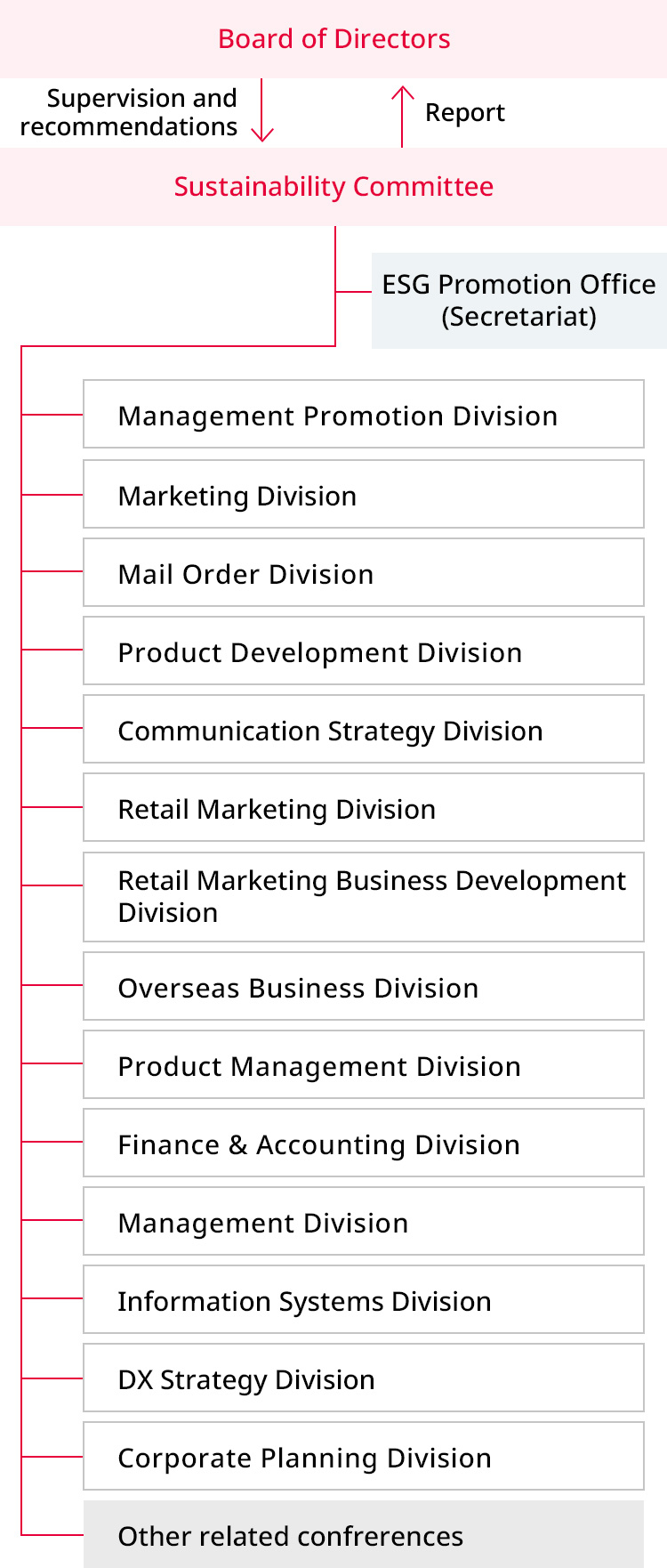Sustainability Management
Shinnihonseiyaku is striving to promote sustainability management in order to achieve sustainable development as a company under our Purpose, “Beyond innovation, for a beautiful smile!” We will work together with our stakeholders to realize a sustainable society through the "beyond innovation" in beauty and health that we have set forth in our Purpose.
Basic Sustainability Policy
Shinnihonseiyaku Group Basic Sustainability Policy
Under the Purpose of “Beyond innovation, for a beautiful smile!,” our Group aims to resolve issues surrounding the global environment and society, and contribute to the realization of a sustainable society together with our stakeholders.
Toward the realization of a sustainable society
Sustainability promotion system
At Shinnihonseiyaku, we have identified materiality (key issues) related to sustainability and are developing a promotion system to solve them. Materiality and other important matters related to sustainability are discussed and resolved by the Sustainability Committee chaired by the President & Representative Director of the Board and Chief Executive Officer. Matters discussed and resolved by the Sustainability Committee are reported to the Board of Directors as appropriate. In addition, targets have been set for efforts to resolve materiality, and related divisions and conferences across the company are taking initiatives and promoting efforts.
Materiality identification process
| Step 1 Identification of social issues |
With reference to our policies, international frameworks and principles*, social conditions, and other factors, we have identified 39 social issues to be considered. *GRI, SASB, ISO 26000, SDGs, etc. |
|---|---|
| Step 2 Prioritization of social issues |
We evaluated the identified social issues from two perspectives: their importance to stakeholders and their importance to our business, and prioritization was conducted with various divisions within the company. |
| Step 3 Formulation of materiality proposals |
The selected social issues were organized into six categories based on their content and characteristics, and materiality proposals were prepared. |
| Step 4 Verification of validity |
We exchanged opinions with management on the proposed materiality and the process to formulate it, and verified its appropriateness. |
| Step 5 Identification of materiality |
We received approval from management and identified materiality. |






